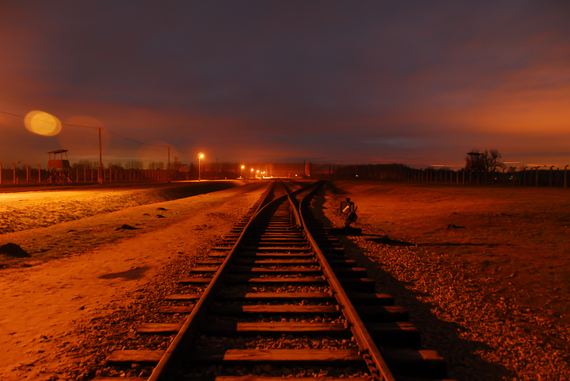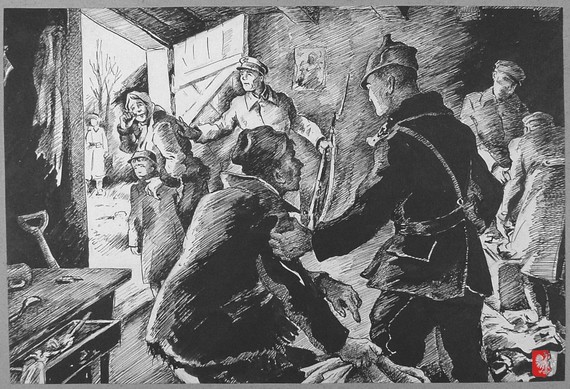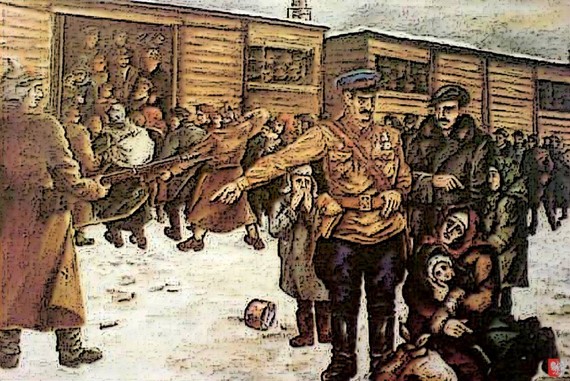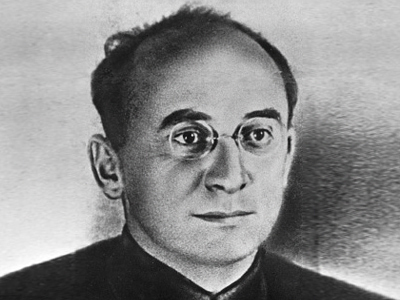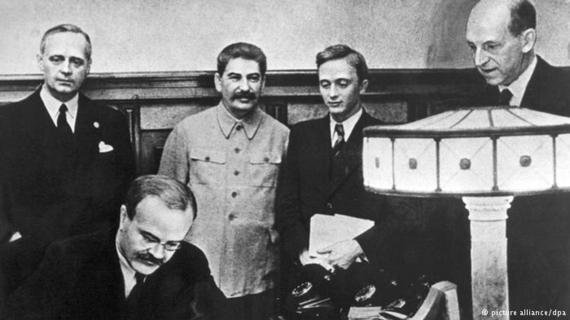Anniversaries are aplenty lately. Less than six months ago, back in September 2014, we got a double whammy: the 75th-anniversary markers of Adolf Hitler's invasion of Poland on Sept. 1, 1939, and Joseph Stalin's invasion of the country on Sept. 17. Everything changed after that. Declarations of war ensued. Hitler began to take one half of Poland; Stalin helped himself to the other.
The world would never be the same.
Just a few weeks ago, on Jan. 27, came the 70th anniversary of the liberation of Auschwitz. In remarkable tributes around the world, it was challenging not to be moved, especially when survivors of the ordeal shared their experiences, revealing so effectively both the fragility of this thing called life as well as its steely resolve. The indomitable human spirit -- she will not be shaken.
There's another date that is noteworthy, but will it get swept under the rug of history? It's Feb. 10, 1940. The events that unfolded on this day back in Eastern Poland may still haunt those who lived through the experience and managed to come out the other side alive. However, the rest of the world is not yet fully aware of what took place and the ripple effects that remain.
One man stood proudly if not perversely at the center of the controversy that unraveled in early February 75 years ago: Stalin.
Take note of five reasons that the date should be noted, studied, definitely discussed more in the mainstream, and remembered.
5. Stalin's Mass Deportation of Polish Citizens
Deportation of Polish people? Yes. It happened. Feb. 10 marks the beginning of those deportations, which came in four waves: the first in February, another in April, then another in June, and yet another in the summer of 1941. Few Polish families in the rural stretches of eastern Poland (now Ukraine) could have predicted the full extent of Stalin's wrath. Like a dragon descending over a medieval village, his invasion of Poland turned into a bona fide reign of terror followed by Sovietization. Stalin's strategy was to occupy the eastern borderlands (today western Ukraine, western Belarus and eastern Lithuania), also referred to as the Kresy, with a population of more than 13 million people including Belarusians, Czechs, Jews, Poles, Ukrainians and other citizens. Sovietization had one purpose: to liquidate the entire Polish state. The mass arrests of civil leaders, priests, policemen and judges actually began on Sept. 18, 1939; however, they continued until June 1941. In all, approximately 200,000 Polish POWs were captured by the Soviets. The majority of them were sent to the gulags. And Feb. 10? The happily-ever-after craved by the Polish citizens living on rural farmland there suddenly turned into a fractured fairy tale.
4. Nearly 1 Million Polish People
That is the estimated total tally of the deported Polish people sent to Siberia. Under the supervision of Lavrentiy Beria, who had become head of the NKVD, the first of several grand-scale deportations began on Feb. 10. The Kresy-Siberia Foundation, a wealth of knowledge on this subject, notes that on Feb. 10, more than 100 trains, each carrying an estimated 1,000 to 2,000 Poles, transported nearly 220,000 souls -- military veterans, settlers, foresters and farmers -- into the glacial abyss of Siberian slave labor.
3. Lavrentiy Beria
It's not a name we often hear or read about, but the NKVD head was perhaps one of Stalin's most trusted comrades. Beria succeeded Nikolai Yezhov as NKVD head in late 1938; Yezhov met his fate in 1940, when orders were given for his execution. It was common at the time for Stalin and the government to swiftly change course and condemn former officials for circumstances they themselves set in motion. Yezhov was blamed for a number of bad things, the economic ramifications spawned by the Great Purge among them. By Stalin's rulebook, his execution was par for the course. In the meantime, Beria took the political baton that was handed to him and oversaw the execution of thousands of prisoners. He did more than become part of Stalin's elite inner circle. He crawled into the strategic bed with the man and produced its sinister offspring. That's right: the mass deportation of Polish citizens.
2. The Molotov-Ribbentrop Pact
Soviet foreign minister Vyacheslav Molotov and Germany's foreign minister Joachim von Ribbentrop crafted and signed this accord, which became the official Treaty of Non-Aggression between Germany and the Soviet Union. Also known as the Nazi-Soviet Pact, the documents were signed in Moscow long before Feb. 10 -- on Aug. 23, 1939, in fact. But the action spawned sinister results later. The agreement allowed Hitler to invade Poland at will. But only one week later the Soviets rampaged areas in the Far East in the Battles of Khalkhin Gol (or the Nomonhan Incident), which saw the fall of the Japanese Sixth Army. By December 1939 the Soviets had already begun making arrangements for the deportations. On Feb. 5 the empty boxcars had been lined up. It was just a matter of time.
1. History Repeats Itself?
Yes and no. Still, it's hard to dismiss some of the world's more noticeable atrocities in the last 75 years. Pick one, any one. Vietnam. North and South Korea. The Middle East. Look at what's reported on the news. Look at what some of today's leaders set into action. Look at what some of today's military -- human beings -- are capable of. Look at what is allowed to unfold. It's interesting to note that last year around this time, the Russia-Ukraine conflict arose -- and still goes on, nearly 75 years to the date from the area that the first wave of deportations began. Twisted fate? Not sure. What remains clear to me, after having talked to many survivors of the Polish deportations for my book Grace Revealed, is that the stories of the Poles need to be shared and told. Their histories need to be preserved. One thing that sprang so marvelously from what unfolded with the Jewish community in the wake of Nazism is that the stories were told. The experiences were shared. The world heard. In many ways, some would say, Poland and its people did not have as much levity. The country had been taken over. Communism ruled. Stalin remained the King-Baby Dysfunctional Daddy in the East. It's only now that that the stories of the deported Poles seem to be coming out with more verve. You can see it in recent documentaries and other published material. As one Polish survivor in her 70s I interviewed recently in suburban Chicago told me, "I never had a chance to heal from this. We were never able to talk about it."
Now she can. We can.
Learn more about what befell the Poles after the deportations here.
Learn more about one family's survival story here.
Learn more about Grace Revealed: A Memoir here.
Some photos courtesy of Kresy-Siberia Foundation.

